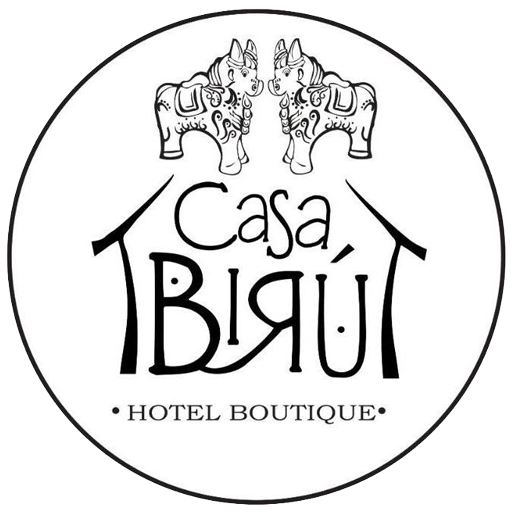
Cusco isn’t for tourists who want generic vacations. This is for travelers who crave whiplash-inducing contrasts. Imagine cobblestone streets where Inca stonework flexes its engineering genius beside colonial balconies dripping with bougainvillea. You’re not just visiting a destination—you’re stepping into a living museum where every alleyway whispers secrets of empires and revolutions.
But here’s the kicker—Cusco doesn’t just rest on its archaeological cred. It’s a city that parties like it’s 1491 (with better cocktails). One day you’re deciphering 500-year-old walls, the next you’re salsa dancing till dawn with locals who treat every night like a festival. Ready to upgrade your passport stamps? Let’s dissect why this Andean powerhouse belongs on your radar.

The Historical Gut-Punch: Where Stones Tell War Stories
Cusco doesn’t have history—it is history. The Inca called it “Qosqo,” meaning “navel of the world.” Spoiler: They weren’t exaggerating. Walk the Plaza de Armas, and you’re literally treading on the Inca Empire’s Times Square. Those cathedral foundations? They’re built atop Pachacuti’s palace—a middle finger from Spanish conquistadors that’s now a UNESCO World Heritage plot twist.
But the real magic’s in the details:
- Sacsayhuamán: Think Machu Picchu’s edgy cousin. These zigzagging megalithic walls (stones weighing up to 300 tons) weren’t just a fortress—they’re an ancient TikTok flex. How’d they move these rocks? Even engineers today shrug.
- Qorikancha: Inca temple turned Santo Domingo convent. Gold-plated walls once reflected the sun—now they’re a mashup of Catholic frescoes and precision-cut stone. It’s like watching two civilizations arm-wrestle through architecture.
- San Pedro Market: Where history smacks your senses. Vendors sell quinoa next to shaman stalls offering llama fetus amulets. Yeah, it’s weird. It’s also real.
Altitude with Attitude: Yes, You’ll Get Winded. No, You Won’t Care
Let’s address the 11,152-foot elephant in the room: Cusco’s altitude hits like a sledgehammer. Your first staircase will feel like sprinting a marathon. But here’s the hack—embrace the struggle. Coca tea isn’t just a ritual; it’s liquid survival. Chew the leaves (yes, it’s legal), nap like a cat, and let your body reboot.
Pro Tip: Use the acclimatization phase to slow down. Notice how the light turns the Andes into a watercolor painting at dusk. Eavesdrop on Quechua grandmothers bartering in the market. This isn’t a city to rush—it’s a city to absorb.
Gateway to the Unreal: Machu Picchu is Just the Opening Act
Every guidebook screams “Machu Picchu!”—and yeah, it’s epic. But reducing Cusco to a Machu Picchu pit stop is like using the Grand Canyon as a bathroom break. The Sacred Valley is Cusco’s backyard playground:
- Moray: Ancient circular terraces that were the Inca’s version of a climate lab. Microclimates for days.
- Maras Salt Mines: Thousands of salt pans cascading down a valley like a Salvador Dalí painting. Taste pink salt fresh from the source.
- Rainbow Mountain: Instagram’s favorite geological mood ring. Pro tip: Go at dawn before the crowds turn it into Disneyland.
Culture Collisions: Where the Past Parties with the Present
Cusco’s soul isn’t in ruins—it’s in the living, breathing Quechua culture. Over 40% of locals speak the Inca language. Witness Inti Raymi, the sun god festival where costumed parades blow Pride Week out of the water. Or hit a peña (folk club) where panpipes and charangos make your Spotify playlist seem pathetic.
But the real culture shock? Food.
- Cuy: Guinea pig. Yes, it’s a thing. Crispy skin, tender meat—tastes like chicken (if chicken was a cultural rite of passage).
- Pisco Sours: The national drink that’s basically a lime margarita with a PhD.
- Chicha Morada: Purple corn drink that looks like potion and tastes like childhood nostalgia.
Adventure’s Playground: From Llamas to Luge
Cusco laughs at your idea of “adventure sports.” Here, adrenaline comes with history lessons:
- Inca Trail: A four-day hike where the climax is a 15th-century city in the clouds. Beat that, StairMaster.
- Via Ferrata + Zip Line: Scale a cliff face, then rocket over the Sacred Valley. Spoiler: The Incas didn’t need harnesses.
- Horseback to Huchuy Qosqo: Ride through villages where time forgot the 21st century.
Sustainable Travel: Your Visit Actually Matters Here
Tourism built Cusco—and almost broke it. But 2024 isn’t about gawking; it’s about reciprocity.
- Stay Local: Skip chain hotels. Book a casa particular where your cash funds a family, not a CEO.
- Shop Like an Ally: Buy textiles directly from weaving cooperatives. That alpaca sweater? It’s someone’s college fund.
- Leave No Trace (Inca Edition): Respect sacred sites. That “perfect Instagram rock” at Machu Picchu? Yeah, don’t sit on it.
Cusco Doesn’t Need You—But You Need Cusco
Let’s get real: Cusco survived conquests, earthquakes, and bad tourist fashion. It’ll survive without you. But you? You need this. You need to stand where an empire rose and fell. To taste air so thin it sharpens your thoughts. To realize that “history” isn’t a textbook chapter—it’s under your hiking boots.
So come for the bucket-list photos. Stay for the moment when a Quechua grandmother smiles as you mispronounce “thank you” (sulpayki). That’s when Cusco stops being a destination and becomes a mirror—showing you how much bigger the world is than your screen.
Final Reality Check:
- Best Time to Visit: Dry season (May-Sept). Wet season (Nov-Mar) has fewer crowds but muddier trails.
- Safety: Safer than most cities. Just don’t flash cash like a rookie.
- Altitude Rx: Diamox helps, but slow pacing helps more.






No comment yet, add your voice below!